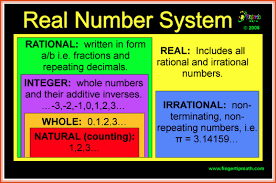Magnetism
In
ancient times Greece people found a rock that attracts iron, nickel and
cobalt. They call them as “magnet “and magnetism comes from here. These
rocks were used later by Chinese people to make compasses. Later
scientists found that, magnets have always two poles different from
electricity. Magnets have two ends or faces called “poles” where the
magnetic effect is highest. In last unit we saw that there is again two
polarities in electricity, “-“charges and “+” charges. Electricity can
exist as monopole but magnetism exists always in dipoles North Pole (represented by N) and South Pole (represented by S). If you break the rock into pieces you get small magnets and each magnet also has two poles N and S.
Same poles of the magnet like in the electricity repel each other and opposite poles attract each other.Strengths of these forces depend on the distance between the poles and intensity of the poles.
Types of Magnets
In nature Fe3O4 is
used as magnet. However, they can also produced by the people. They can
have shapes rod, u shaped or horse shoe. Matters showing strong
magnetic effect are called ferromagnetic; matters showing low magnetic
effect are called diamagnetic and paramagnetic matters.
Coulomb’s Law for Magnetism
Effects
of the two magnets to each other are inversely proportional to the
square of distance between them and directly proportional to magnetic
pole strenghts of each magnet. These forces are equal in magnitudes and
opposite in directions.
F=K(m1m2)/d*d
F1=-F2
Where; k is the constant, m1 and m2 are the magnetic intensities of the poles and d is the distance between them.
Magnetic Field
Magnets show repulsion or attraction force around itself. This area affected from the force of magnets called magnetic field. We cannot see magnetic field necked eye. However, if we put a sheet on the magnet and put some iron filing on this sheet we can easily observe the magnetic field around the magnet with the shapes of the iron filling. The shapes of magnetic field lines showed in the picture given below;
When the lines get closer to each other, this means that magnetic field is strong in that region.

Magnetic Flux
Magnetic flux is the number of magnetic field lines passing through a surface placed in a magnetic field.
We show magnetic flux with the Greek letter; Ф. We find it with following formula;
B is the magnetic field and unit of B is Tesla
A is the area of the surface and unit of A is m2
In the first one, magnetic field lines are perpendicular to the surface, thus, since angle between normal of the surface and magnetic field lines 0 and cos0=1equation of magnetic flux becomes;
Ф=B.A
In the second picture, since the angle between the normal of the system and magnetic field lines is 90º and cos90º=0 equation of magnetic flux become;
Ф=B.A.cos90º=B.A.0=0
Magnetic Permeability
In previous units we have talked about heat conductivity and electric conductivity of matters. In this unit we learn magnetic permeability that is the quantity of ability to conduct magnetic flux. We show it with µ. Magnetic permeability is the distinguishing property of the matter, every matter has specific µ. Picture given below shows the behavior of magnetic field lines in vacuum and in two different matters having different µ.
Magnetic Field
Magnets show repulsion or attraction force around itself. This area affected from the force of magnets called magnetic field. We cannot see magnetic field necked eye. However, if we put a sheet on the magnet and put some iron filing on this sheet we can easily observe the magnetic field around the magnet with the shapes of the iron filling. The shapes of magnetic field lines showed in the picture given below;
Directions of magnetic field lines are showed below;
When the lines get closer to each other, this means that magnetic field is strong in that region.
Magnetic field lines;
Magnetic field is a vector quantity and showed with the letter B. Unit of B is Tesla. When we calculate magnetic field of a magnet we assume that there is a 1 unit of m at the point we want to find. We find the magnetic field with following formula;
- Never intersect
- If they are parallel we say that there is a regular magnetic field.
Magnetic field is a vector quantity and showed with the letter B. Unit of B is Tesla. When we calculate magnetic field of a magnet we assume that there is a 1 unit of m at the point we want to find. We find the magnetic field with following formula;

Magnetic flux is the number of magnetic field lines passing through a surface placed in a magnetic field.
We show magnetic flux with the Greek letter; Ф. We find it with following formula;
Ф=B.A.cosӨ
Where Ф is the magnetic flux and unit of Ф is Weber (Wb) B is the magnetic field and unit of B is Tesla
A is the area of the surface and unit of A is m2
In the first one, magnetic field lines are perpendicular to the surface, thus, since angle between normal of the surface and magnetic field lines 0 and cos0=1equation of magnetic flux becomes;
Ф=B.A
In the second picture, since the angle between the normal of the system and magnetic field lines is 90º and cos90º=0 equation of magnetic flux become;
Ф=B.A.cos90º=B.A.0=0
Magnetic Permeability
In previous units we have talked about heat conductivity and electric conductivity of matters. In this unit we learn magnetic permeability that is the quantity of ability to conduct magnetic flux. We show it with µ. Magnetic permeability is the distinguishing property of the matter, every matter has specific µ. Picture given below shows the behavior of magnetic field lines in vacuum and in two different matters having different µ.





Comments
Post a Comment